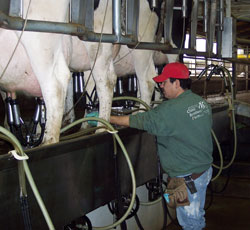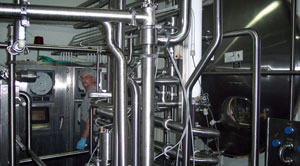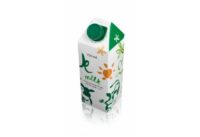
Editor's Note: This a synopsis of a feature story that will appear in the May issue of Dairy Foods.
WATERLOO, Wis.-It takes good quality, fresh milk to make good quality cheese. For George Crave and his brothers, procuring fresh milk means maintaining a good relationship with about 600 Holsteins. The Craves and their families operate Crave Brothers Farms, and Crave Brothers Farmstead Cheese, LLC.
Across the street from the farm's milk barn, the brothers have built a brand new, high-quality cheese plant. Raw milk is transported to the cheese plant through a pipe that runs under the road, and an hour or so after leaving the cow, the milk is being processed and pumped into the vats.
The Crave Brothers farm operation is modern and efficient. So when the Craves set out to build a cheese plant they wanted a modern, efficient cheese plant, says George Crave. "A lot of the really small plants are very basic," he says. "People walk into our facility and they say 'Wow, you've built a real cheese factory here.'" That "real factory" designation comes from the use of modern process equipment. As for the size, well, with capacity to produce about 2 million lbs of cheese a year, the plant is tiny in comparison to giant plants in Europe and California. But it's still a substantial operation compared to some of the smallest artisan cheese.
Raw milk is refrigerated at 37° F in a cold storage tank as soon as the cows are milked. A stainless steel elbow connects the tank to the underground pipe when cheese is being made. Once the milk reaches the plant side, it goes first to a separator. Then a heat exchanger pasteurizes the separated milk. "We pasteurize all of our milk," Crave says as he enters the small room. "Some of the really little operations out there use raw milk, but ours is all pasteurized." From the heat exchanger milk is pumped into one of two 25,000 lb vats that were built about 30 years ago by Kraft Foods.
"Kraft used to build its own equipment, and they made it very durable," Crave says. "These things are built like tanks." Once the vats are filled milk is brought up to temperature and cultures are added. "Curd formation and cutting is done in the vats," Crave explains, "and then (for mozzarella-type cheeses) the curd is pumped over the stretcher cooker." Set times and cooking methods vary depending on the product.

Hands-on cheesemaking
Once the cheese is formed and cooled in a cold water bath it is transferred in brining bins to a second room adjacent to the make room. About the size of small restaurant kitchen, this is where the hands-on part of the cheesemaking is done and where the packaging takes place.On a recent visit by Dairy Foods, more than a dozen plant employees were engaged in forming the ropes into braids for a Mexican style cheese similar to rope-mozzarella called Oaxaca. The braids, which have been slipped into plastic bags are vacuum sealed with one of two double-chambered sealing machines Once the packages are sealed they are hand packed into corrugated cases.
Could the Craves have found a simpler way to add value to their product than building a plant and launching a second business? Sure, and they thought about it, but in the end cheesemaking became a calling. "We realized we could continue to sell some of our milk and still have some available to make some extremely specialty type cheeses," he says. "I thought that would be the fun part."

